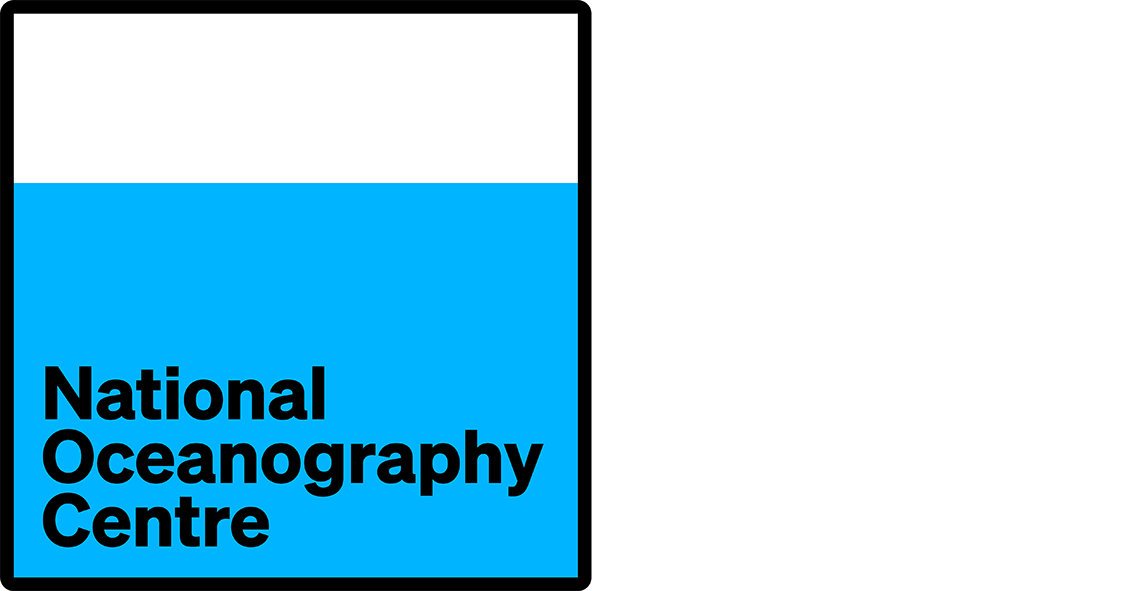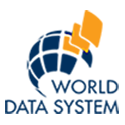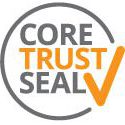Metadata Report for BODC Series Reference Number 484556
Metadata Summary
Problem Reports
Data Access Policy
Narrative Documents
Project Information
Data Activity or Cruise Information
Fixed Station Information
BODC Quality Flags
SeaDataNet Quality Flags
Metadata Summary
Data Description |
|||||||||||||||||||||||||||||||||||||||||||||
|
|||||||||||||||||||||||||||||||||||||||||||||
Data Identifiers |
|||||||||||||||||||||||||||||||||||||||||||||
|
|||||||||||||||||||||||||||||||||||||||||||||
Time Co-ordinates(UT) |
|||||||||||||||||||||||||||||||||||||||||||||
|
|||||||||||||||||||||||||||||||||||||||||||||
Spatial Co-ordinates | |||||||||||||||||||||||||||||||||||||||||||||
|
|||||||||||||||||||||||||||||||||||||||||||||
Parameters |
|||||||||||||||||||||||||||||||||||||||||||||
|
|||||||||||||||||||||||||||||||||||||||||||||
|
|||||||||||||||||||||||||||||||||||||||||||||
Problem Reports
No Problem Report Found in the Database
Data Access Policy
Public domain data
These data have no specific confidentiality restrictions for users. However, users must acknowledge data sources as it is not ethical to publish data without proper attribution. Any publication or other output resulting from usage of the data should include an acknowledgment.
The recommended acknowledgment is
"This study uses data from the data source/organisation/programme, provided by the British Oceanographic Data Centre and funded by the funding body."
Narrative Documents
Sea Bird Electronics SBE13 Dissolved Oxygen Sensor
The SBE 13 was designed as an auxiliary sensor for Sea Bird SBE 9plus, but can fitted in custom instrumentation applications. When used with the SBE 9 Underwater Unit, a flow-through plenum improves the data quality, as the pumping water over the sensor membrane reduces the errors caused by oxygen depletion during the periods of slow or intermittent flushing and also reduces exposure to biofouling.
The output voltage is proportional to membrane current (oxygen current) and to the sensor element's membrane temperature (oxygen temperature), which is used for internal temperature compensation.
Two versions of the SBE 13 are available: the SBE 13Y uses a YSI polarographic element with replaceable membranes to provide in situ measurements up to 2000 m depth and the SBE 13B uses a Beckman polarographic element to provide in situ measurements up to 10500 m depth, depending on the sensor casing. This sensor includes a replaceable sealed electrolyte membrane cartridge.
The SBE 13 instrument has been out of production since 2001 and has been superseded by the SBE 43.
Specifications
| Measurement range | 0 to 15 mL L-1 |
| Accuracy | 0.1 mL L-1 |
| Time response | 2 s at 25°C 5 s at 0°C |
| Depth range | 2000 m (SBE 13Y- housing in anodized aluminum) 6800 m (SBE 13B- housing in anodized aluminum) 105000 m (SBE 13B- housing in titanium) |
Further details can be found in the manufacturer's specification sheet.
Sea-Bird Electronics SBE 911 and SBE 917 series CTD profilers
The SBE 911 and SBE 917 series of conductivity-temperature-depth (CTD) units are used to collect hydrographic profiles, including temperature, conductivity and pressure as standard. Each profiler consists of an underwater unit and deck unit or SEARAM. Auxiliary sensors, such as fluorometers, dissolved oxygen sensors and transmissometers, and carousel water samplers are commonly added to the underwater unit.
Underwater unit
The CTD underwater unit (SBE 9 or SBE 9 plus) comprises a protective cage (usually with a carousel water sampler), including a main pressure housing containing power supplies, acquisition electronics, telemetry circuitry, and a suite of modular sensors. The original SBE 9 incorporated Sea-Bird's standard modular SBE 3 temperature sensor and SBE 4 conductivity sensor, and a Paroscientific Digiquartz pressure sensor. The conductivity cell was connected to a pump-fed plastic tubing circuit that could include auxiliary sensors. Each SBE 9 unit was custom built to individual specification. The SBE 9 was replaced in 1997 by an off-the-shelf version, termed the SBE 9 plus, that incorporated the SBE 3 plus (or SBE 3P) temperature sensor, SBE 4C conductivity sensor and a Paroscientific Digiquartz pressure sensor. Sensors could be connected to a pump-fed plastic tubing circuit or stand-alone.
Temperature, conductivity and pressure sensors
The conductivity, temperature, and pressure sensors supplied with Sea-Bird CTD systems have outputs in the form of variable frequencies, which are measured using high-speed parallel counters. The resulting count totals are converted to numeric representations of the original frequencies, which bear a direct relationship to temperature, conductivity or pressure. Sampling frequencies for these sensors are typically set at 24 Hz.
The temperature sensing element is a glass-coated thermistor bead, pressure-protected inside a stainless steel tube, while the conductivity sensing element is a cylindrical, flow-through, borosilicate glass cell with three internal platinum electrodes. Thermistor resistance or conductivity cell resistance, respectively, is the controlling element in an optimized Wien Bridge oscillator circuit, which produces a frequency output that can be converted to a temperature or conductivity reading. These sensors are available with depth ratings of 6800 m (aluminium housing) or 10500 m (titanium housing). The Paroscientific Digiquartz pressure sensor comprises a quartz crystal resonator that responds to pressure-induced stress, and temperature is measured for thermal compensation of the calculated pressure.
Additional sensors
Optional sensors for dissolved oxygen, pH, light transmission, fluorescence and others do not require the very high levels of resolution needed in the primary CTD channels, nor do these sensors generally offer variable frequency outputs. Accordingly, signals from the auxiliary sensors are acquired using a conventional voltage-input multiplexed A/D converter (optional). Some Sea-Bird CTDs use a strain gauge pressure sensor (Senso-Metrics) in which case their pressure output data is in the same form as that from the auxiliary sensors as described above.
Deck unit or SEARAM
Each underwater unit is connected to a power supply and data logging system: the SBE 11 (or SBE 11 plus) deck unit allows real-time interfacing between the deck and the underwater unit via a conductive wire, while the submersible SBE 17 (or SBE 17 plus) SEARAM plugs directly into the underwater unit and data are downloaded on recovery of the CTD. The combination of SBE 9 and SBE 17 or SBE 11 are termed SBE 917 or SBE 911, respectively, while the combinations of SBE 9 plus and SBE 17 plus or SBE 11 plus are termed SBE 917 plus or SBE 911 plus.
Specifications
Specifications for the SBE 9 plus underwater unit are listed below:
| Parameter | Range | Initial accuracy | Resolution at 24 Hz | Response time |
|---|---|---|---|---|
| Temperature | -5 to 35°C | 0.001°C | 0.0002°C | 0.065 sec |
| Conductivity | 0 to 7 S m-1 | 0.0003 S m-1 | 0.00004 S m-1 | 0.065 sec (pumped) |
| Pressure | 0 to full scale (1400, 2000, 4200, 6800 or 10500 m) | 0.015% of full scale | 0.001% of full scale | 0.015 sec |
Further details can be found in the manufacturer's specification sheet.
SeaTech Transmissometer
Introduction
The transmissometer is designed to accurately measure the the amount of light transmitted by a modulated Light Emitting Diode (LED) through a fixed-length in-situ water column to a synchronous detector.
Specifications
- Water path length: 5 cm (for use in turbid waters) to 1 m (for use in clear ocean waters).
- Beam diameter: 15 mm
- Transmitted beam collimation: <3 milliradians
- Receiver acceptance angle (in water): <18 milliradians
- Light source wavelength: usually (but not exclusively) 660 nm (red light)
Notes
The instrument can be interfaced to Aanderaa RCM7 current meters. This is achieved by fitting the transmissometer in a slot cut into a customized RCM4-type vane.
A red LED (660 nm) is used for general applications looking at water column sediment load. However, green or blue LEDs can be fitted for specilised optics applications. The light source used is identified by the BODC parameter code.
Further details can be found in the manufacturer's Manual.
RV Hesperides 8/93 CTD Data Documentation
Documentation
Documentation for CTD Data collected by B.I.O. Hesperides, 8/93 (4-26 August 1993) by the University of Wales Bangor, UK under the Direction of E.D. Barton.
Instrumentation
The instrument was a new Sea-Bird Electronics SBE-911 which measured conductivity, temperature, pressure, fluorescence, transmittance and dissolved oxygen.
Calibration
In order to calibrate the different sensors in the CTD system water samples and temperature readings were routinely taken during most of the CTD casts.
Salinity
Salinity samples were drawn from the Niskin Bottles on the General Oceanic Rosette sampler and analysed on board in a Guildline Autosal salinometer.
Temperature
Temperature readings were taken from recently calibrated digital thermometers. There were 43 temperature comparisons and 70 salinity comparisons. The mean temperature difference was 0.01 °C with a standard deviation of 0.012 °C. While the mean salinity difference was 0.0005 psu with a standard deviation of 0.0041 psu. In both cases the mean was so small that it was not considered necessary to make any corrections to the manufacturer's CTD temperature calibration.
Transmittance
In the case of the Seatech transmissometer, the calibration procedure calls for the measurement of the output voltage with the light path blocked and in the air. Blocked measurements were satisfactory giving 0.000 volts (manufacturer's value 0.005 volts). Air readings were variable even after careful cleaning of the window of the instrument. The 'best' value would have implied multiplication of transmissometer volts by 4.806/4.61, so that observed maximum values in the sea of 4.50 volts became 4.69 volts, corresponding to a transmission of 93.8%, in excess of the 91.3% transmission of pure water. It was thus decided to accept the manufacturer's calibration (carried out in November 1990).
Oxygen
The Oxygen values use the manufacturers calibration values for April 1993.
Project Information
No Project Information held for the Series
Data Activity or Cruise Information
Cruise
| Cruise Name | HE9308 |
| Departure Date | 1993-08-06 |
| Arrival Date | 1993-08-27 |
| Principal Scientist(s) | |
| Ship | BIO Hesperides |
Complete Cruise Metadata Report is available here
Fixed Station Information
No Fixed Station Information held for the Series
BODC Quality Control Flags
The following single character qualifying flags may be associated with one or more individual parameters with a data cycle:
| Flag | Description |
|---|---|
| Blank | Unqualified |
| < | Below detection limit |
| > | In excess of quoted value |
| A | Taxonomic flag for affinis (aff.) |
| B | Beginning of CTD Down/Up Cast |
| C | Taxonomic flag for confer (cf.) |
| D | Thermometric depth |
| E | End of CTD Down/Up Cast |
| G | Non-taxonomic biological characteristic uncertainty |
| H | Extrapolated value |
| I | Taxonomic flag for single species (sp.) |
| K | Improbable value - unknown quality control source |
| L | Improbable value - originator's quality control |
| M | Improbable value - BODC quality control |
| N | Null value |
| O | Improbable value - user quality control |
| P | Trace/calm |
| Q | Indeterminate |
| R | Replacement value |
| S | Estimated value |
| T | Interpolated value |
| U | Uncalibrated |
| W | Control value |
| X | Excessive difference |
SeaDataNet Quality Control Flags
The following single character qualifying flags may be associated with one or more individual parameters with a data cycle:
| Flag | Description |
|---|---|
| 0 | no quality control |
| 1 | good value |
| 2 | probably good value |
| 3 | probably bad value |
| 4 | bad value |
| 5 | changed value |
| 6 | value below detection |
| 7 | value in excess |
| 8 | interpolated value |
| 9 | missing value |
| A | value phenomenon uncertain |
| B | nominal value |
| Q | value below limit of quantification |


